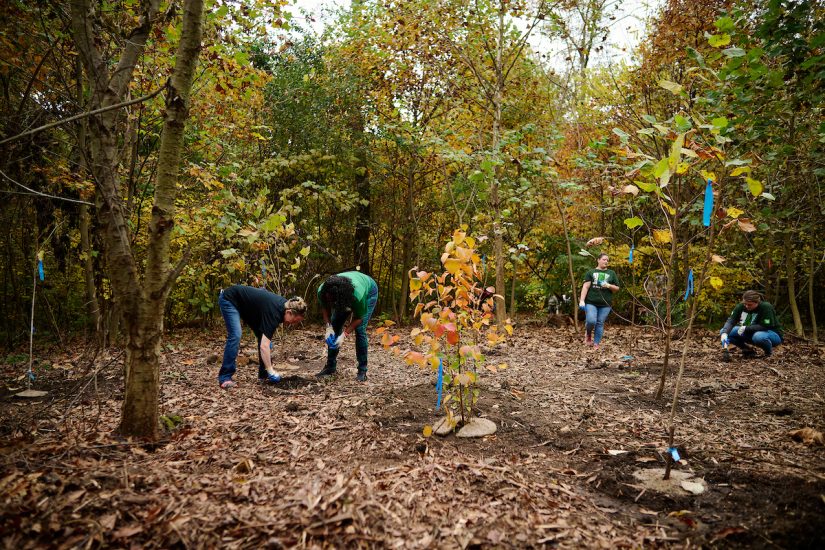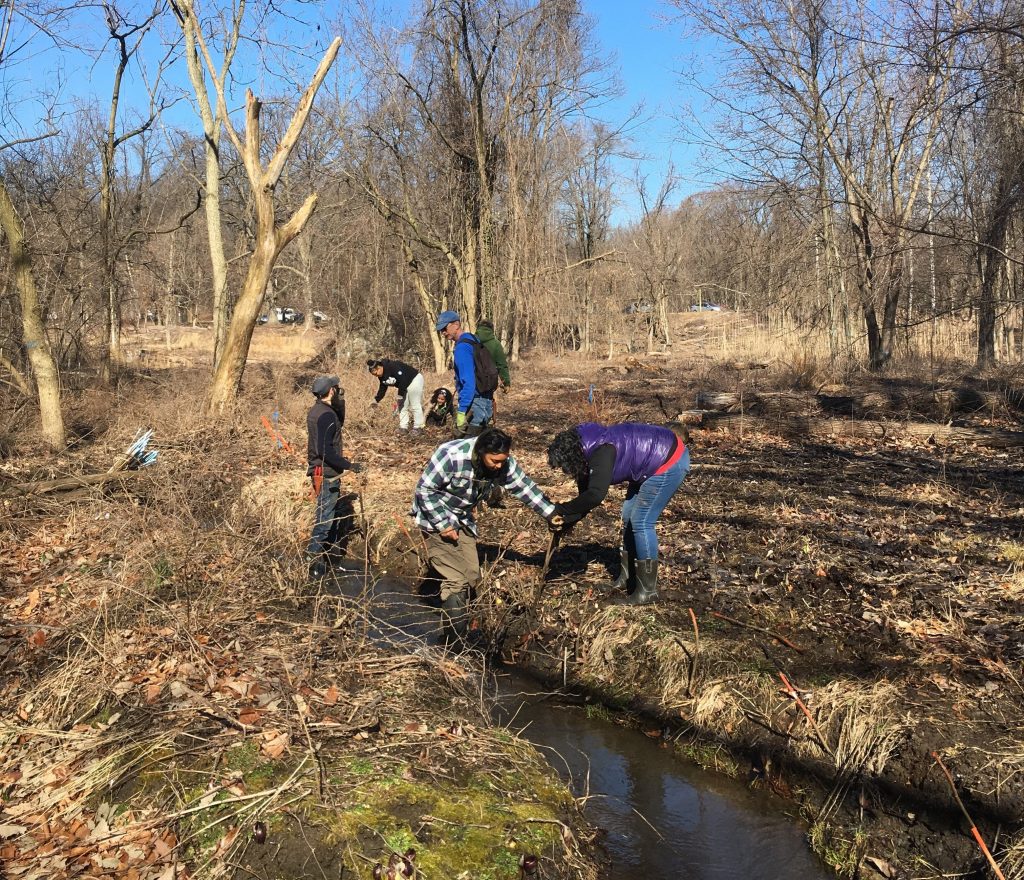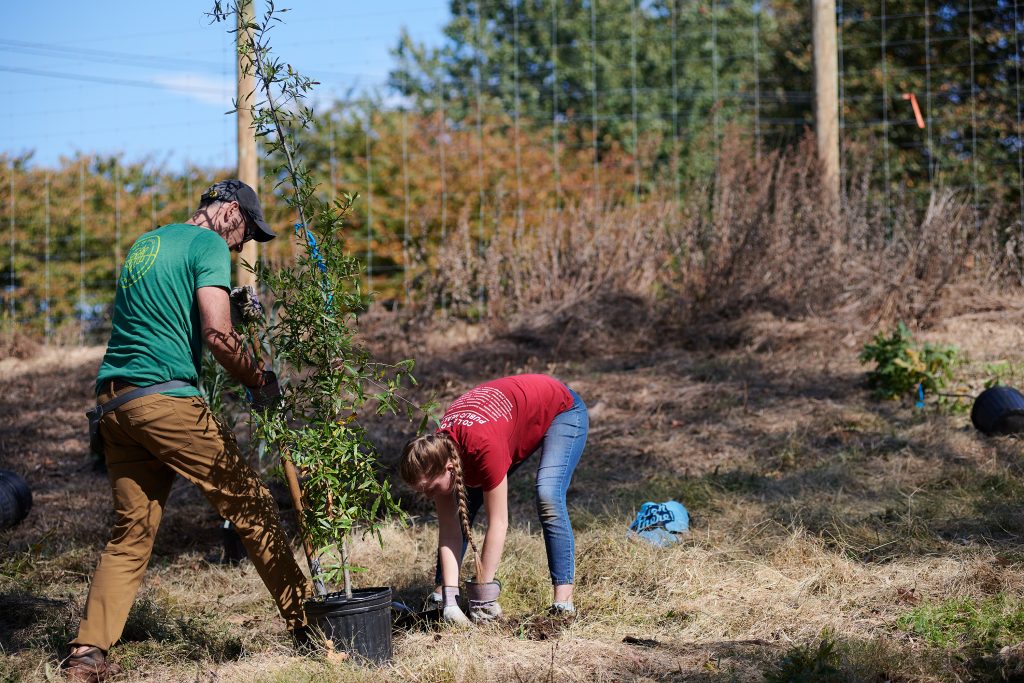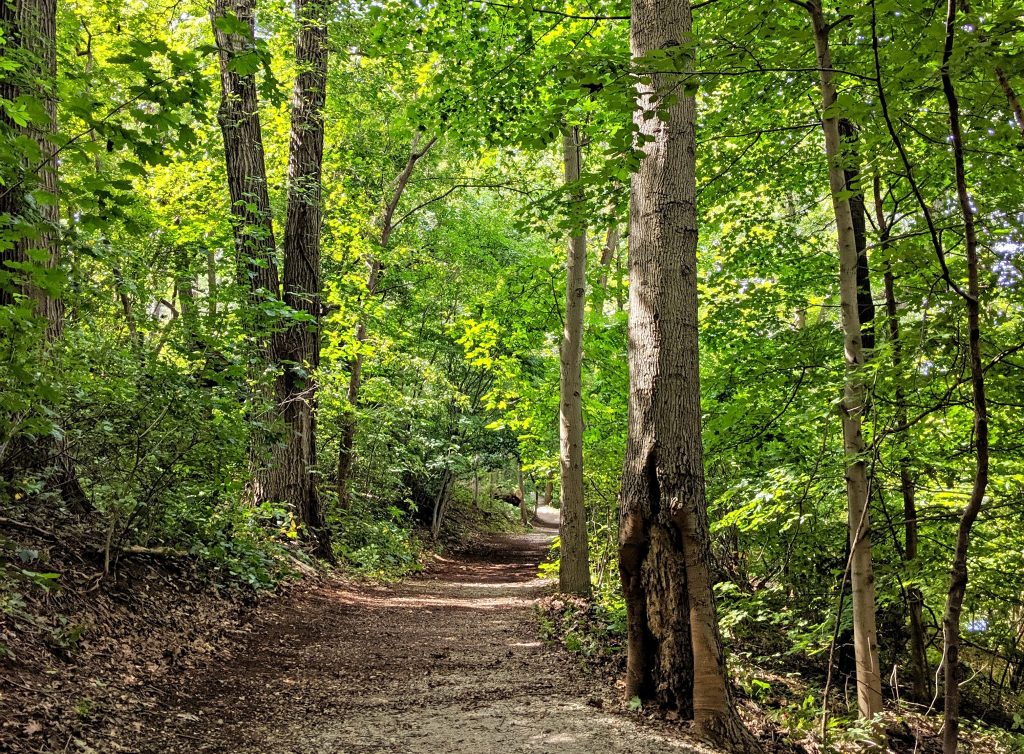What is ecological restoration?
As climate change and biodiversity loss affect green spaces in Philadelphia, the city needs ecological restoration: the act of rebuilding ecosystems that have been disturbed. Helping natural habitats recover from degradation caused by human activity and invasive species is one of Fairmount Park Conservancy’s main priorities.
Some habitats are so degraded, due to deforestation and pollution, that environmentalists have to start from scratch. This is what happened in Haddington Woods over nine years ago.
Why Haddington Woods?
In 2015, Philadelphia Parks & Recreation’s Natural Lands Division, staff from Fairmount Park Conservancy, and other partners PowerCorpsPHL, the U.S. Forest Service (USFS), and the Academy of Natural Sciences were exploring large-scale restoration sites around the city. Haddington Woods, a 60-acre urban forest, is next to Cobbs Creek Park: one of the seven crucial watersheds with creeks still flowing throughout Philadelphia. Haddington Woods’ proximity to Cobbs Creek, along with its acreage, made it a great site for human recreation, ecological functioning, and native wildlife habitat restoration.
How do you restore biodiversity?
Haddington Woods was incredibly degraded before 2015. Primarily dominated by non-native, invasive species, its biodiversity wasn’t as rich and diverse as other less degraded and disturbed local forests. Because the degradation of this area was so extreme, it was determined that it would be better to start fresh.
First up: eliminating or modifying the causes of ecological degradation to allow natural processes to thrive. Many of the trees in Haddington Woods were in such bad condition that they had to be cut down. Tree removal is never easy, but sometimes it’s necessary for effective restoration to occur.
The initial removal of unhealthy trees allowed for the introduction of healthy, native tree species while the Conservancy experimented with new methods over several years in Haddington Woods. Trees that are native to this area, like Eastern White Pine, are accustomed to colder temperatures than trees native to slightly warmer areas in the South, such as Loblolly Pine. At the start of this project back in 2015, with temperatures predicted to rise rapidly due to climate change, there was an opportunity to experiment with trees in Philadelphia that would traditionally be in warmer climates to prepare future generations. And as this year’s summer was the Earth’s hottest summer ever recorded, this experimentation is as urgent as ever.
Philadelphia Parks & Recreation, the Conservancy, and its partners at the USFS have also been experimenting with tree planting density at Haddington Woods. Trying to reforest in an urban setting can be difficult because of human-created challenges, local development obstacles, and – most critically – the non-native, invasive species pressure.
Invasive species grow a lot faster than native species, and invasive trees leaf out earlier and go dormant later. For many reasons, they can outcompete the native vegetation, making it difficult to establish native stands of plants and animals in an urban setting. The urban forest is fragmented, meaning that where there are more open exposed edges, there is a greater chance for invasive seeds to get in, as well as trash, invasive animals, and potentially degrading human activity.
One of the strategies in Haddington Woods was to plant native trees densely, or tighter together. These trees can close their canopy sooner and allow the roots to take over the soil more quickly. The project designers used varying amounts of planting density to study the differences between them. The dense areas are the grids on the map below marked 89, then 44 then 19, signifying the amount of trees planted in each 10th-acre grid. The zero plots were the control.
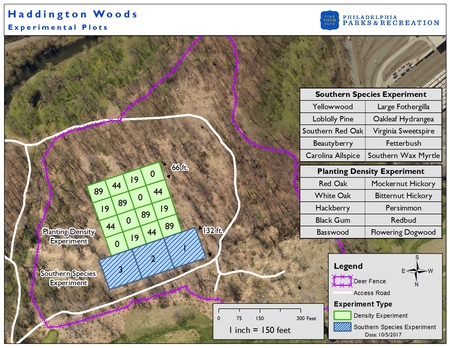
What has happened since the original restoration work?
As temperatures on Earth increase, the proactive planting of trees that can withstand higher temperatures has proven effective. If this experiment continues to go well, it may change the trees we plant, allowing us to opt for trees that can withstand higher temperatures. The trees in Haddington Woods that were densely populated have been easier to maintain than their less dense counterparts. The trees can close their canopies sooner and box out invasive species.
Studies have shown that deer can negatively affect trees, plants, and other animals when their populations grow too numerous, as they have in Philadelphia. So a deer-proof fence was installed in the east and west enclosures in Haddington to protect the urban forest.
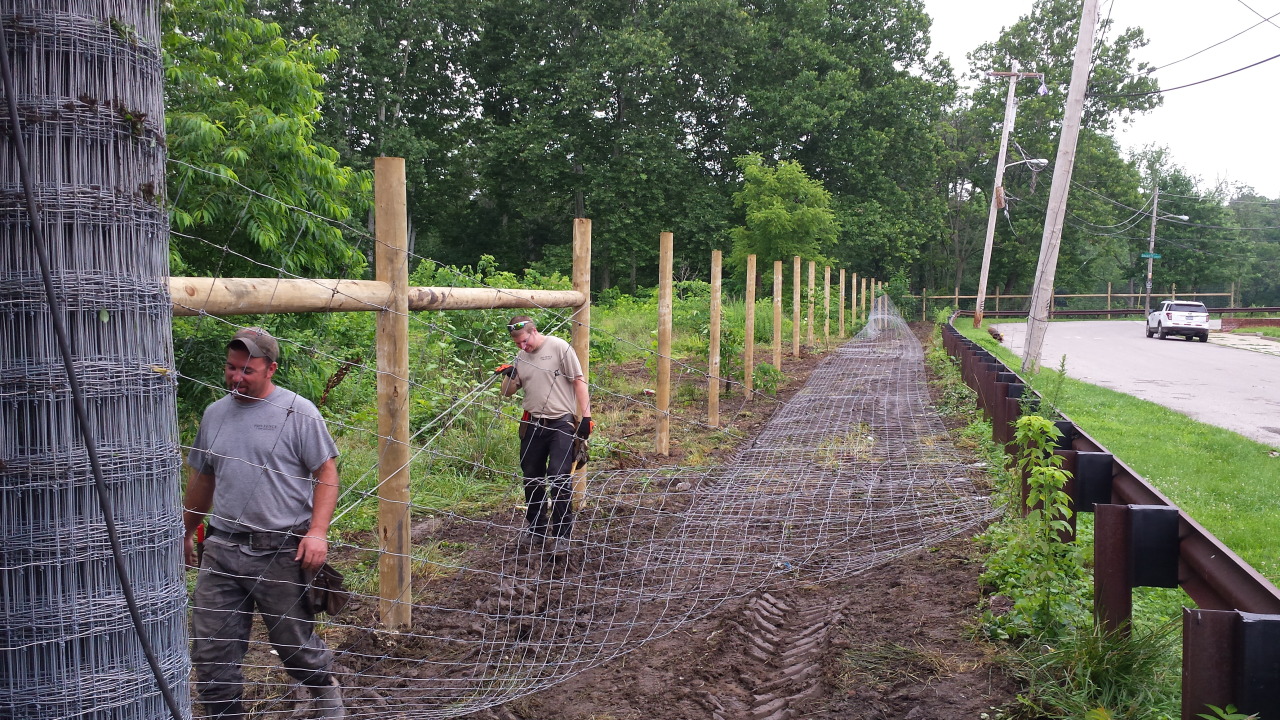
Photo credit: Philadelphia Parks & Recreation
In October, TD Bank funded a tree planting volunteer day in Haddington Woods through their TD Tree Days initiative. The effort was supported by the Arbor Day Foundation and allowed for the planting of 233 native trees and 45 shrubs with planting support from PowerCorpsPHL, one of our key partners in the ecological restoration of the urban forest.
Since 2015, the Conservancy and partners have planted 5,600 trees in Haddington Woods, with more on the way.
Recently, every tree in Haddington Woods was measured and monitoring plots were set up, and each tree will be measured again come spring, a process that will be repeated every spring and winter. Philadelphia Parks & Recreation Natural Lands Division employees, the Conservancy, PowerCorps, USFS, and the Academy of Natural Sciences will continue densely planting plots with native species for the next five to 10 years. How that is done depends on the data set.
Ecological restoration means thinking long-term and committing to years of work. This requires funding, staffing, and community involvement to make each project a success. The Conservancy continues to invest in Philadelphia parks and the people who visit them, and we’re excited to help build a resilient, sustainable future for generations to come — and to use ecological restoration as a means to do so.
